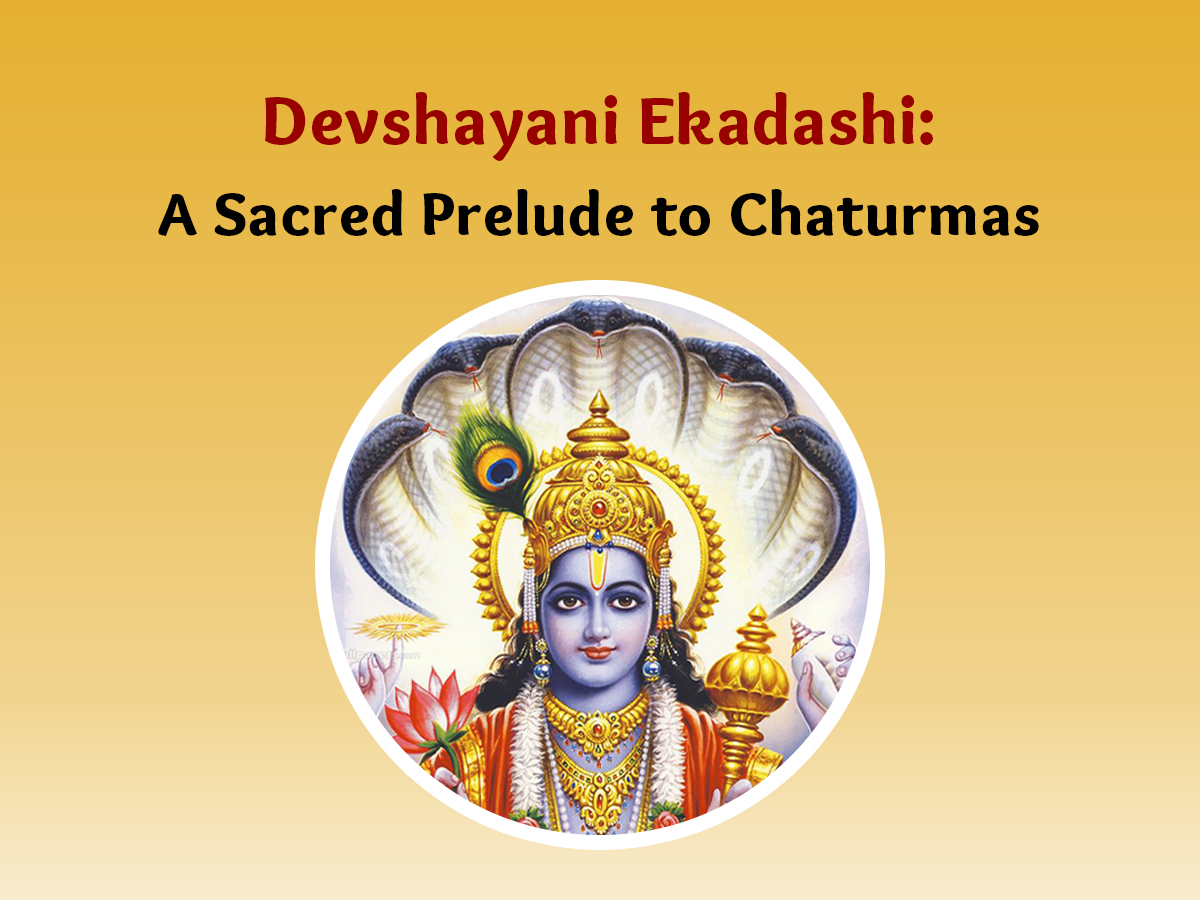Devshayani Ekadashi: A Sacred Prelude to Chaturmas

Introduction
Devshayani Ekadashi is a significant day in the Hindu calendar, marking the beginning of Chaturmas, a four-month period when Lord Vishnu is believed to enter a state of cosmic slumber. In 2024, Devshayani Ekadashi falls on July 17th, with devotees engaging in rituals and fasting from sunrise until the following sunrise, focusing on spiritual enlightenment. The mythology behind this day involves Lord Vishnu resting on the serpent Ananta in the cosmic ocean, symbolizing a time for enhanced spiritual practices. The observance includes fasting, charity, and special prayers to Lord Vishnu, aiming at spiritual growth and seeking divine favor. Devshayani Ekadashi is closely associated with the Puri Jagannath Rath Yatra, a significant festival featuring a grand procession of Lord Jagannath.
Lord Vishnu’s Story of Shayana
The story of Lord Vishnu's cosmic slumber, known as Shayana, is a cornerstone of Hindu mythology and marks the commencement of the Chaturmas period. According to legend, on Devshayani Ekadashi, Lord Vishnu reclines in the Kshira Sagara, the ocean of cosmic milk, resting upon Shesha, the infinite serpent. This state of divine rest continues for four months, concluding on Prabodhini Ekadashi.
The significance of this event is elaborated in the Bhavishyottara Purana, where Krishna explains to Yudhishthira the importance of observing Shayani Ekadashi. The narrative also includes the tale of King Mandata, whose kingdom suffered from a severe drought. Following the sage Angiras' advice to observe the Devshayani Ekadashi vrata, the king's land was blessed with rain, demonstrating the divine favor granted by observing this sacred fast.
During these months, devotees believe that Lord Vishnu's rest symbolizes a time for them to enhance their spiritual practices. The Chaturmasya vrata, a vow of devotion and discipline observed during this period, encourages devotees to focus on inner reflection and spiritual growth. This time is marked by increased religious activities, including fasting, charity, and special prayers dedicated to Lord Vishnu, aimed at seeking his divine blessings and favor.
The story of Shayana not only highlights the divine rest of Lord Vishnu but also serves as a reminder for devotees to align their lives with spiritual principles, fostering a deeper connection with the divine and promoting a disciplined and reflective lifestyle.
Spiritual and Cultural Importance
Chaturmas, starting with Devshayani Ekadashi and ending on Prabodhini Ekadashi, marks a period of divine rest. This four-month phase aligns with the monsoon season in India, a time when deities are believed to be in a state of slumber. During this period, devotees engage in various religious practices, including fasting on all Ekadashis and abstaining from certain foods like onions, garlic, grains, and beans. The observance of Chaturmas is deeply rooted in Hindu astrology and mythology, with beliefs that during these months, the environment is laden with defects that can affect human health. Rituals and activities are traditionally restricted to counteract these effects. Chaturmas is not only spiritually significant but also encourages a lifestyle in harmony with seasonal changes and the agricultural cycle.
Devotional Practices
On Devshayani Ekadashi, Vaishnavas engage in devout practices to honor Lord Vishnu. Devotees observe a strict fast (vrat), refraining from food and water, beginning on Ekadashi and ending on Dwadashi, after morning rituals and prayers. The observance focuses on purity of mind, body, and soul, aiming for spiritual elevation and divine blessings. Worshippers recite the Vrat Katha, a narrative explaining the fast's significance. Temples become centers of devotion, with followers participating in ritualistic baths, offering prayers, and adorning the idol of Lord Vishnu with sacred symbols. The day concludes with Aarti and Prasad distribution, fostering community among devotees. The night is marked by vigilance and piety, with followers singing hymns and reciting mantras in praise of Lord Vishnu, signifying their unwavering faith.
Fasting
Devotees observe a strict fast from sunrise on Ekadashi to sunrise on Dwadashi, abstaining from food and sometimes water, reflecting spiritual discipline. The fast is broken the following day with morning rituals, including prayers and reciting the Vrat Katha. Different types of fasting include the Nirjala fast, involving complete abstinence from food and water, and the Phalahar fast, allowing fruits and certain foods. A vegetarian diet is maintained, avoiding alcohol and following fasting timings meticulously. The culmination of the fast brings a sense of spiritual renewal and empowerment, symbolizing wisdom dispelling ignorance.
Changes in Hindu ceremonies and Festivities
Devshayani Ekadashi marks a shift in the Hindu religious calendar, signaling the onset of Chaturmas, during which certain ceremonies and festivities are put on hold. Traditionally viewed as inauspicious for weddings and major celebrations, this period focuses on spiritual growth and inner reflection.
Main impacts are
- Weddings and Engagements are not done during this time.
- Delay of sacred thread ceremonies (Upanayanan).
- Avoidance of housewarming ceremonies (Griha Pravesh).
- Increased engagement in religious activities like pilgrimages and spiritual discourses.
The essence of Chaturmas is to minimize worldly activities and maximize spiritual efforts, aligning with Lord Vishnu’s divine rest.
Conclusion
Devshayani Ekadashi is a profound and spiritually significant day in the Hindu calendar, marking the start of the Chaturmas period. This time of divine rest for Lord Vishnu invites devotees to deepen their spiritual practices, engage in rituals, and observe strict fasting. The observance not only honors the divine but also aligns devotees with the seasonal and agricultural cycles, promoting a lifestyle of discipline and reflection. The mythology, rituals, and cultural practices associated with Devshayani Ekadashi underscore its importance in fostering spiritual growth, community bonding, and adherence to traditional values. As devotees prepare for this sacred period, they reaffirm their commitment to their faith, seeking spiritual elevation and divine blessings.





